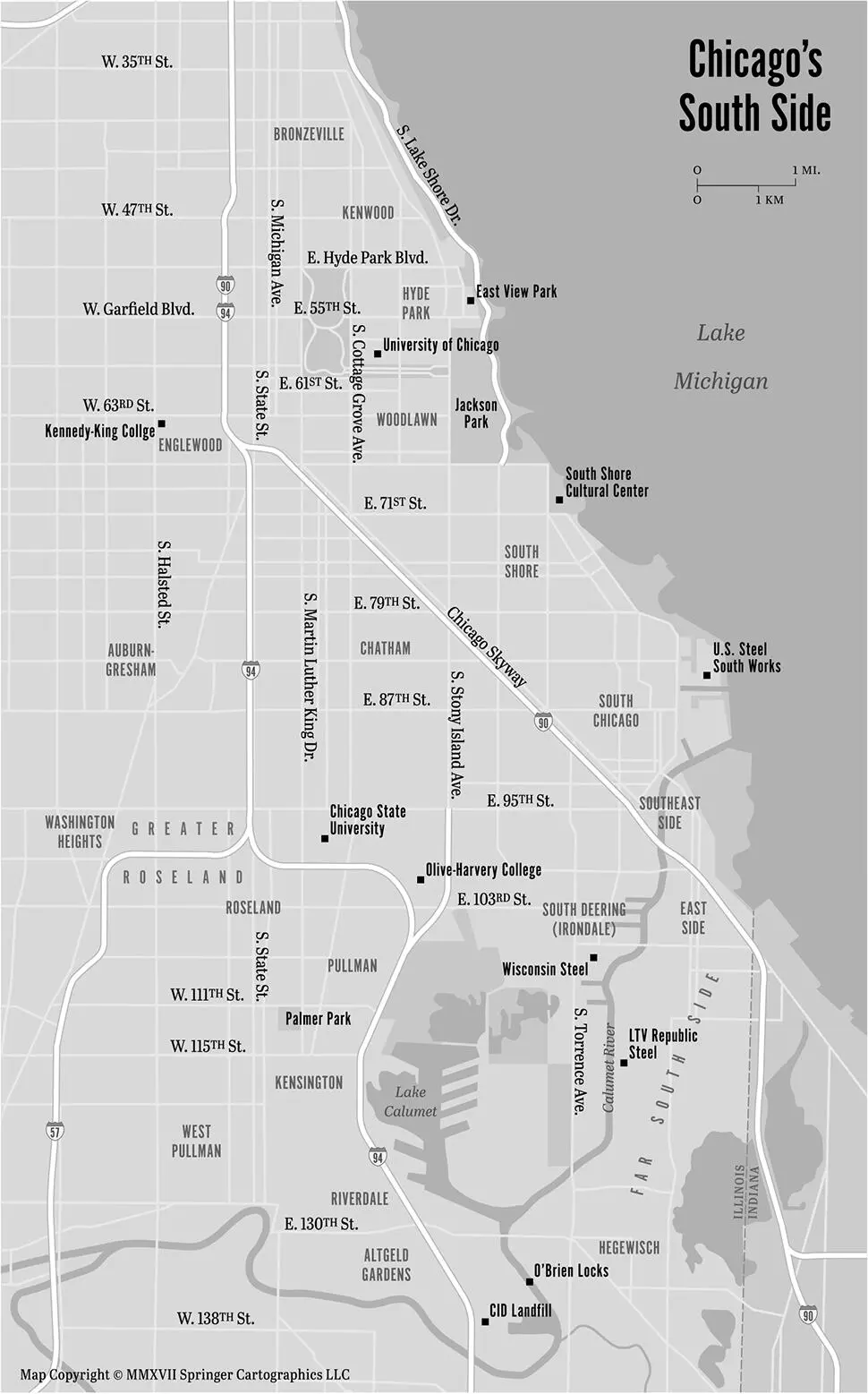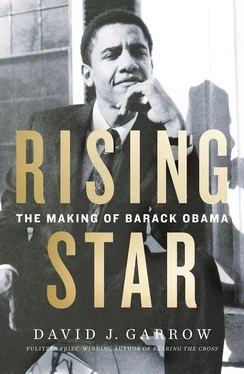As one employee recounted, “We got no warning of this closing at all. I was loading boxes and the foreman came up and just told me to go home. I figured they’d run into some kind of problem with the trucks.” As Harper remembered, “We just dumped them in the street with nothing to show for what they had done…. It was anything but honorable and anything but diplomatic…. It makes you feel sick inside.”
Harper and the workers also didn’t know that Chase had frozen Wisconsin’s bank accounts. By 5:00 P.M., the foremen were instructed to tell the men on their shifts not to come back to work. Frank had returned home by that time, and his foreman telephoned him there. “Lumpkin,” he said, “don’t expect to come back to work. It looks bad.” By early Saturday morning, the news had spread to all of the workers and their families. One woman remembers being a fourteen-year-old girl when her father worked at Wisconsin. She never forgot her mother waking her on Saturday morning to tell her what had happened: “They called the ore boat back,” with the coast guard radioing it to return to South Chicago. “It was a crucial moment of rupture,” she explained, when the “widespread belief in future prosperity for oneself and one’s family” and the stability that flowed from that assumption was first called into question. Wisconsin’s closing “would tear through a fabric that had sustained generations” and portended “the collapse of the world as I had known it in Southeast Chicago.” For her dad, the mill’s demise “upended the world as my father knew it.” 1
By midday on Monday, March 31, a sense of trauma, crisis, and fear had spread across the Southeast Side as people gradually realized that all of Friday’s paychecks were now worthless. Both of Envirodyne’s Wisconsin holding companies had filed for bankruptcy. One lawyer involved told Richard Longworth, “I pleaded with Chase to at least take care of those checks that bounced. Chase said they couldn’t see any legal responsibility. I told them there’s more than a legal responsibility involved here,” but that was rejected.
Scores of other businesses—industrial suppliers closely tied to Wisconsin Steel and retail establishments patronized by Wisconsin workers—immediately began to suffer their own financial consequences. By Wednesday, April 2, the Daily Calumet was reporting that more than a thousand workers at Chicago Slag & Ballast and the Chicago West Pullman & Southern Railroad, both of which had serviced Wisconsin, had also lost their jobs. The Daily Cal’s editorial page predicted “a chain reaction within the community” as “unemployment will spread forth from the plant,” and warned its readers to grasp “the all-too-real possibility” that Wisconsin “might never reopen.” If so, “in a short time, the life and breath of the community will cease to exist, and the neighborhood will be as dead as Wisconsin Steel.”
Each day the news grew worse. Before the week was out, the Daily Cal was reporting a total of “nearly 7,000 ‘ripple effect’ layoffs” by employers whose businesses had been tied to Wisconsin. The federal bankruptcy court authorized the EDA to spend up to $1 million to purchase the coal that was necessary to avoid shutting down the coke ovens—which once cooled become unstable and are impossible to restart—but as Easter weekend began, former Wisconsin workers complained that there was a two-week lag in unemployment checks, that food stamp applications were being rejected if children did not have Social Security numbers, and that Wisconsin wouldn’t let them into the plant to get their personal tools and work shoes. “All I feel now is hatred,” one worker told John Wasik, the Daily Cal reporter who was chronicling the debacle. South Chicago Savings Bank announced a three-month moratorium for Wisconsin borrowers with outstanding loans, and offered new emergency loans to the former workers too. The Daily Cal warned that “the longer the plant sits idle, the greater are the chances it will never reopen…. At stake is more than dollars and cents, more than jobs and employment … there are people at stake.” 2

One voice that remained utterly silent even as the crisis moved into its third week was PSW president Tony Roque. But on Wednesday, April 16, about thirty men went first to the Chicago office of the federal National Labor Relations Board, and then to the Illinois State Department of Labor to complain about the PSW’s utter passivity, only to be told they should file claims in bankrupty court. Their efforts made the front page of the next day’s Daily Cal, and the story concluded by telling interested workers to call Frank Lumpkin at home. Roque responded immediately by sending letters to every member announcing a general meeting on Sunday, April 27—in the ballroom of the mammoth Chicago Hilton hotel, in the downtown “Loop,” more than fifteen miles north of South Deering.
The PSW’s Hilton meeting generated angry jibes—“Why have they rented the Hilton when their members can’t even buy food?” one wife asked the Tribune’s Richard Longworth—but when testimony in the federal bankruptcy case revealed that workers’ compensation coverage for the skeleton crew manning the coke ovens and blast furnace had ended on April 1, the PSW struck Wisconsin, pulling those workers from the plant. Only the EDA’s willingness to pay the $35,000 a week in natural gas costs prevented the coke ovens from going cold. 3
As Wisconsin’s final death rattle was sounding, two progressive Chicago clergymen—Father Tom Joyce, a Claretian priest who directed the Claretians’ Peace and Justice Committee, and Dick Poethig, director of the Presbyterian Church’s Institute on the Church in Urban Industrial Society, decided to attend a mid-May gathering at St. Thomas More College in Covington, Kentucky, a “National Conference on Religion and Labor.” One of the featured speakers was Presbyterian minister Rev. Chuck Rawlings, who talked about his recent experience as principal organizer of the Ecumenical Coalition of the Mahoning Valley (ECMV), in northeastern Ohio.
As they listened to Rawlings, Tom Joyce and Dick Poethig could tell how similar the effects of the closing of Wisconsin were to what had occurred near Youngstown, Ohio, three years earlier. They also recognized that it had been clergymen, not union leaders, business interests, or elected officials, who had led the local community’s response.
On September 19, 1977, the Lykes Corporation announced the closing of Campbell Works, with a loss of more than forty-one hundred jobs. When Chuck Rawlings, who worked for the Church and Society department of the Episcopal Diocese of Ohio, heard of the closing, he called Episcopal bishop John H. Burt, who in turn phoned James W. Malone, the Roman Catholic bishop of Youngstown. An interfaith breakfast was convened, and Rawlings circulated a memorandum calling for church leaders to confront the steel crisis. In the meantime, Youngstown attorney Staughton Lynd contacted the Washington-based National Center for Economic Alternatives (NCEA), whose codirectors, Gar Alperovitz and Jeff Faux, believed the shutdown called for an infusion of investment capital from the federal government, which would require an “unusual political mobilization” featuring “a dramatic local and national moral campaign.” In a New York Times op-ed essay, Alperovitz and Faux called for a Tennessee Valley Authority–style “development corporation” with “mixed community and employee ownership” to oversee such a federal investment.
Rawlings’s band of Ohio bishops and pastors called themselves the Ecumenical Coalition of the Mahoning Valley (ECMV), and they convened a “Steel Crisis Conference,” at which Alperovitz was the featured speaker. Out of that came “A Religious Response to the Mahoning Valley Steel Crisis,” which was signed by more than two hundred clergy members. In this pastoral letter, the clergymen echoed Alperovitz in declaring that “this is not in any sense a purely economic problem.” They were “convinced that corporations have social and moral responsibilities,” and said they were “seriously exploring the possibility of community and/or worker ownership” of a reopened Campbell Works.
Читать дальше













